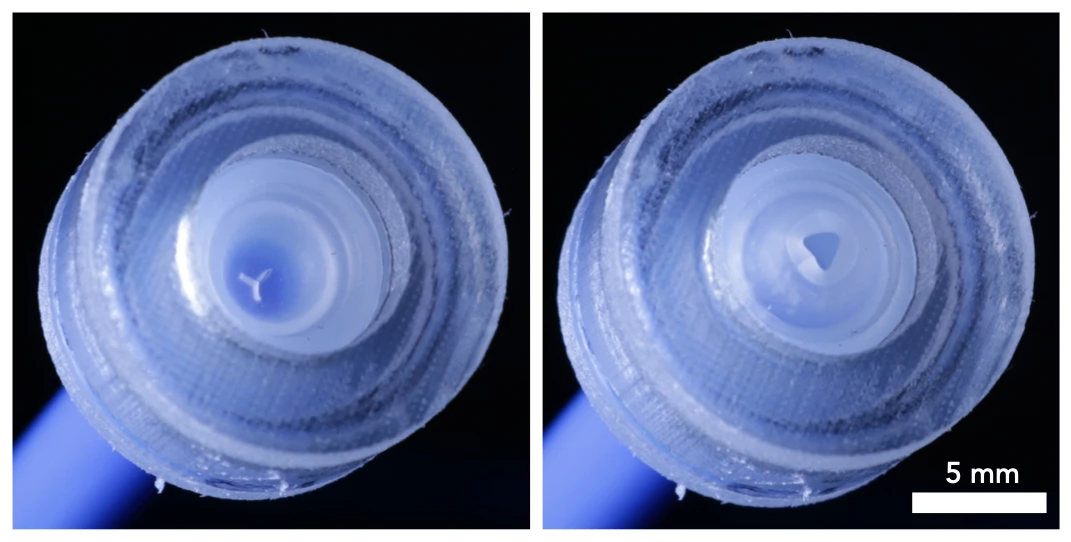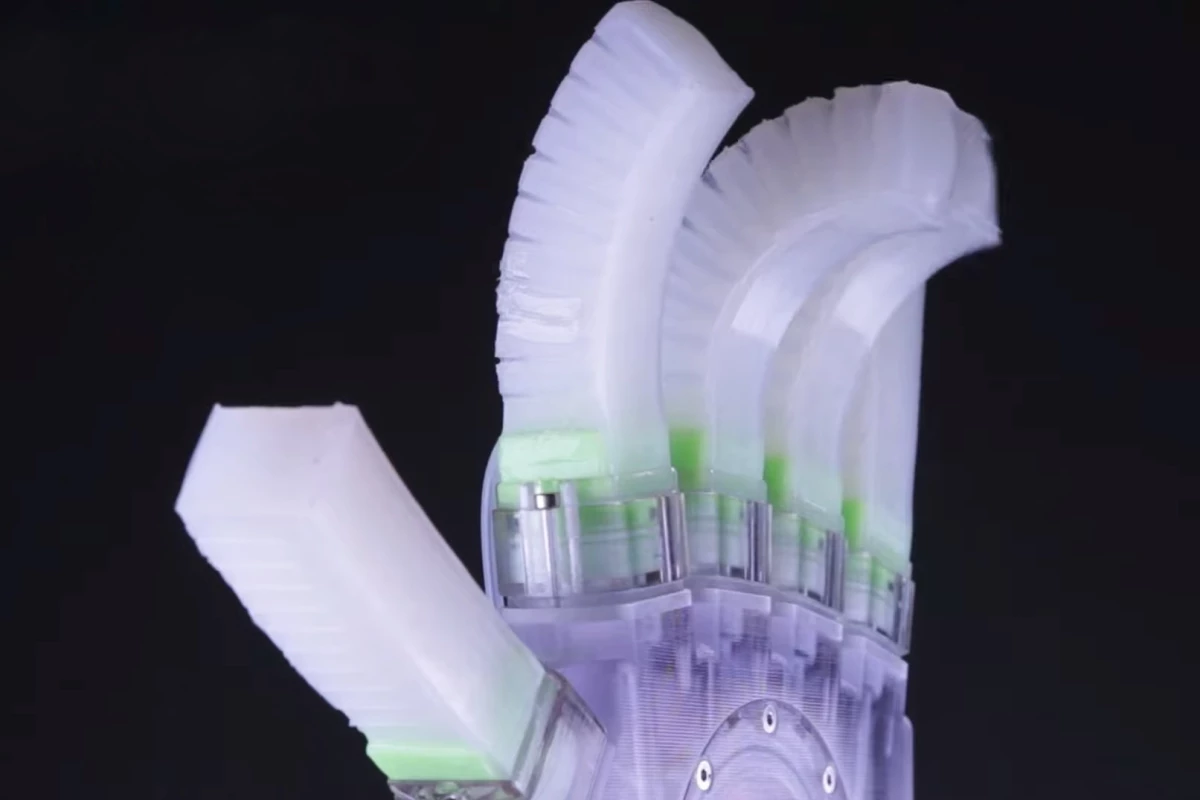Plastic ketchup bottles have a valve in the lid that opens to let ketchup out, and that sometimes "sputters" if the bottle is squeezed too hard. Dutch scientists have copied that mechanism to create an actuator that could be used in autonomous soft robotic devices.
Designed by a team at the Eindhoven University of Technology, the gadget is known as a "hysteretic valve." It emulates ketchup bottle valves' tendency to rapidly and repeatedly open and close (letting a bit of ketchup out each time), even when the bottle is being smoothly and evenly squeezed.
Such a response might seem undesirable – and it is, in ketchup bottles. In a robot, though, the idea is that if air were pumped through such a valve into a soft pneumatic leg or finger, the sputtering action would cause the appendage to repeatedly expand and contract, moving back and forth as it did so.
What's more, the movement would be initiated by a simple analogue mechanism, as opposed to more complex and power-hungry electronics. It's even possible that the air pump could be triggered by changes in the robot's environment, eliminating the need for external control.

Putting it fairly simply, the hysteretic valve consists of a flat silicone base with slits laser-cut into it. Flaps formed by the slits remain closed until the air pressure behind them reaches a certain threshold, at which point they open and release the air. They then close again, and the cycle repeats itself over and over.
Unexpectedly, it was found that when two of the valves are connected to one pump, they tend to open and close out of step with one another – in other words, one valve is open when the other is closed. Utilizing this effect, the researchers created a soft-bodied robot that walks using four alternately stepping legs. They also created a robotic hand, that sequentially thrums its pneumatic fingers.
A paper on the research, which is being led by Assoc. Prof. Bas Overvelde and PhD researcher Luuk van Laake, was published in the journal Matter. The quadruped robot and the robotic hand can be seen in action, in the video below.





